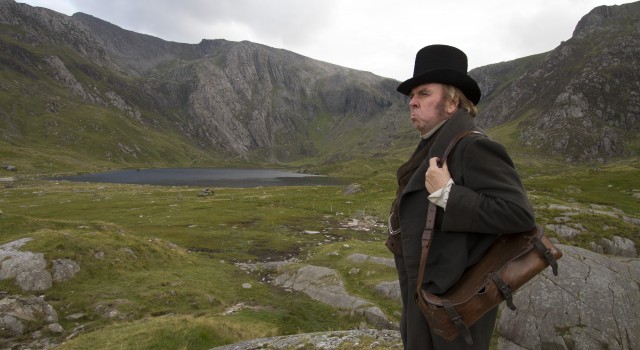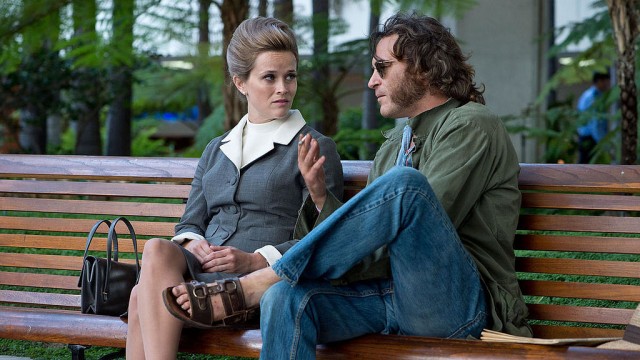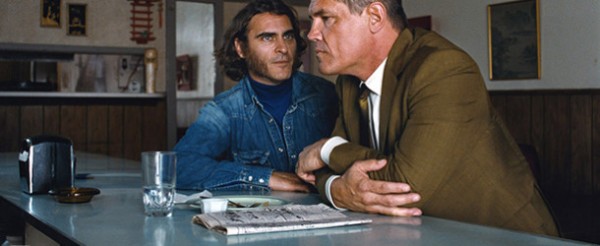Sikkema Jenkins & Co.
520 West 22nd St. between Tenthy & Eleventh Aves.
Tuesday – Saturday through January 17, free, 10:00 am – 6:00 pm
212-929-2262
www.sikkemajenkinsco.com
Brooklyn-based multimedia artist Kara Walker didn’t have much to say about her staggering installation “A Subtlety or the Marvelous Sugar Baby: an Homage to the unpaid and overworked Artisans who have refined our Sweet tastes from the cane fields to the Kitchens of the New World on the Occasion of the demolition of the Domino Sugar Refining Plant” before and during its May 10 to July 6 run in Williamsburg. Instead, she let the work, a monumental white sphinx/mammy hovering over a collection of molasses-dripping “Sugar Babies,” speak for itself to more than 130,000 visitors who came to experience it (and posted nearly 20,000 photographs to Instagram and Twitter). Walker has now followed that up with “Afterword,” a telling three-part exhibit at Sikkema Jenkins that gives new perspective on the work, which was commissioned by Creative Time. The first room contains a series of preparatory sketches, including a 2013 ink-and-watercolor version of the central figure throwing up and a cut-paper black silhouette of the sphinx on archival board, reversing the black-white, racially charged color scheme. The second room is dominated by the sphinx’s left fist, along with several “Sugar Babies”; watercolors in bold pinks, yellows, blues, and reds made during the run of the installation that reveal aspects of the history of the sugar trade and the building of the sphinx, visualizing the construction activities in terms of slavery; and the large-scale gouache-on-paper “Terrible Vacation,” a swirling horizontal update of J. M. W. Turner’s The Slave Ship (which plays an important role in the new film Mr. Turner).

Kara Walker has the last word in examination of her popular Domino Sugar Refinery installation (photo by twi-ny/mdr)
In the third room, a brown maquette of the sphinx sits in a glass case, surrounded by more sketches, including a twenty-panel narrative on the history of sugar production, leading to a screening room that shows a pair of films: For An Audience, six cameras captured the last hour of the installation, as visitors took pictures in front of the work, stared in disbelief, cried, laughed, and, in the final few minutes, were allowed to touch it, each person relating to it in a unique way. “During its eight week run,” Walker writes about the twenty-eight-minute film, “conversation around A Subtlety wound its way across different social media platforms to become an object of contention as well as reverence, and a talking point about historic injustice, artistic hubris, the public gaze, responsible viewership, black audiences vs. white ones, black female representation, aggressive male behavior, self recognition, and ‘selfies.’ . . . It was certainly a curiosity.” Of course, she knows it was much more than a curiosity, continuing, “One could observe many meanings taking shape in individual viewers, and unlike most contemporary art events — especially one featuring large nude female figures with negro physiognomies and colossal genitalia — full families with small children, elderly churchgoers, artists, grandstanders, and a general public of all shapes came out each weekend in large numbers to bear witness.” If you were not able to bear witness yourself when the piece was on display in Brooklyn — the lines did tend to get rather long at prime times — you can at least get a feel for what all the deserved hoopla was about through this exhibit, which looks at the before, during, and after, culminating in the other film being screened, the six-and-a-half-minute Rhapsody, which shows the installation being torn down to the “exuberant” sounds of Emmanuel Chabrier’s 1883 orchestral composition, “España.”


 Ostensibly set during the Korean War but actually about the controversial battle that was raging in Vietnam, Robert Altman’s MASH is one of the most subversive, and funniest, antiwar films ever to come from a Hollywood studio. Adapted by Hollywood Ten blacklisted writer Ring Lardner Jr. from Richard Hooker’s bookMASH: A Novel about Three Army Doctors, the film focuses on a different kind of hero: the doctors and nurses at a Mobile Surgical Army Hospital not far from the front lines. These brave men and women don’t go around with guns, grenades, and helmets; instead, they equip themselves with surgical masks, clamps, and scalpels, fighting to save the lives of those who risked theirs on the battlefield. Instead of celebrating killing, they celebrate survival, and celebrate they do, led by Capts. Benjamin Franklin “Hawkeye” Pierce (Donald Sutherland) and John Francis Xavier “Trapper John” McIntyre (Elliott Gould), who have their own way with wine, women, and song. Joined by Capt. Augustus Bedford “Duke” Forrest (Tom Skerritt), they ridicule Majs. Margaret “Hot Lips” Houlihan (Sally Kellerman) and Frank Burns (Robert Duvall), regularly embarrass Father John Patrick “Dago Red” Mulcahy (René Auberjonois), flirt endlessly with Lt. Maria “Dish” Schneider (Jo Ann Pflug) and her nursing staff, and generally wreak havoc that their commanding officer, Lt. Col. Henry Blake (Roger Bowen), will usually let them get away with, as long as they don’t interrupt his fishing outings. Hawkeye, Duke, and Trapper drink from a homemade still, take bets on whether Hot Lips’ carpet matches the drapes, play golf, and make fun of the military and religion every chance they get, especially during a mock funeral for Capt. Walter Koskiusko Waldowski (John Schuck), the dentist known as “Painless,” who has decided to commit suicide. The wacky cast of characters also includes Gary Burghoff as Cpl. Radar O’Reilly, Altman regular Michael Murphy as Capt. Ezekiel Bradbury “Me Lay” Marston IV, Bud Cort as Pvt. Lorenzo Boone, G. Wood as Brig. Gen. Charlie Hammond, and Kim Atwood as Ho-Jon. But Hawkeye and Trapper also happen to be outstanding doctors who take their oath very seriously, even when operating on an injured enemy. Their brazen disregard for authority of all kinds and the rule of military law is a knowing slap in the face to governments around the world, who so often send their young men and women off to war for highly questionable reasons.
Ostensibly set during the Korean War but actually about the controversial battle that was raging in Vietnam, Robert Altman’s MASH is one of the most subversive, and funniest, antiwar films ever to come from a Hollywood studio. Adapted by Hollywood Ten blacklisted writer Ring Lardner Jr. from Richard Hooker’s bookMASH: A Novel about Three Army Doctors, the film focuses on a different kind of hero: the doctors and nurses at a Mobile Surgical Army Hospital not far from the front lines. These brave men and women don’t go around with guns, grenades, and helmets; instead, they equip themselves with surgical masks, clamps, and scalpels, fighting to save the lives of those who risked theirs on the battlefield. Instead of celebrating killing, they celebrate survival, and celebrate they do, led by Capts. Benjamin Franklin “Hawkeye” Pierce (Donald Sutherland) and John Francis Xavier “Trapper John” McIntyre (Elliott Gould), who have their own way with wine, women, and song. Joined by Capt. Augustus Bedford “Duke” Forrest (Tom Skerritt), they ridicule Majs. Margaret “Hot Lips” Houlihan (Sally Kellerman) and Frank Burns (Robert Duvall), regularly embarrass Father John Patrick “Dago Red” Mulcahy (René Auberjonois), flirt endlessly with Lt. Maria “Dish” Schneider (Jo Ann Pflug) and her nursing staff, and generally wreak havoc that their commanding officer, Lt. Col. Henry Blake (Roger Bowen), will usually let them get away with, as long as they don’t interrupt his fishing outings. Hawkeye, Duke, and Trapper drink from a homemade still, take bets on whether Hot Lips’ carpet matches the drapes, play golf, and make fun of the military and religion every chance they get, especially during a mock funeral for Capt. Walter Koskiusko Waldowski (John Schuck), the dentist known as “Painless,” who has decided to commit suicide. The wacky cast of characters also includes Gary Burghoff as Cpl. Radar O’Reilly, Altman regular Michael Murphy as Capt. Ezekiel Bradbury “Me Lay” Marston IV, Bud Cort as Pvt. Lorenzo Boone, G. Wood as Brig. Gen. Charlie Hammond, and Kim Atwood as Ho-Jon. But Hawkeye and Trapper also happen to be outstanding doctors who take their oath very seriously, even when operating on an injured enemy. Their brazen disregard for authority of all kinds and the rule of military law is a knowing slap in the face to governments around the world, who so often send their young men and women off to war for highly questionable reasons.


 Timothy Spall was named Best Actor at the Cannes Film Festival for his compelling portrayal of British artist Joseph Mallord William Turner in Mike Leigh’s lovely biopic, Mr. Turner. Spall, who played Peter Pettigrew in the Harry Potter series and has appeared in such other Leigh films as Topsy-Turvy, All or Nothing, Life Is Sweet, and Secrets & Lies, portrays Turner as a gruff, self-involved painter who grunts and growls his way through life. At his home studio he is assisted by his aging father, William (Paul Jesson), and his devoted housekeeper, Hanna Danby (Dorothy Atkinson), who he occasionally shags when in the mood. Turner carries his sketchbook wherever he goes, always on the look-out for a beautiful landscape or winter storm that could become the subject of his next painting. With that in mind, he rents a room in a small seaside inn run by Sophia Booth (Marion Bailey), who eventually becomes more than just his landlady. An artist well ahead of his time, Turner becomes frustrated with the men at the Royal Academy of Arts and lisping art critic John Ruskin (Joshua McGuire), who don’t appreciate his work properly, especially when he starts heading toward abstraction.
Timothy Spall was named Best Actor at the Cannes Film Festival for his compelling portrayal of British artist Joseph Mallord William Turner in Mike Leigh’s lovely biopic, Mr. Turner. Spall, who played Peter Pettigrew in the Harry Potter series and has appeared in such other Leigh films as Topsy-Turvy, All or Nothing, Life Is Sweet, and Secrets & Lies, portrays Turner as a gruff, self-involved painter who grunts and growls his way through life. At his home studio he is assisted by his aging father, William (Paul Jesson), and his devoted housekeeper, Hanna Danby (Dorothy Atkinson), who he occasionally shags when in the mood. Turner carries his sketchbook wherever he goes, always on the look-out for a beautiful landscape or winter storm that could become the subject of his next painting. With that in mind, he rents a room in a small seaside inn run by Sophia Booth (Marion Bailey), who eventually becomes more than just his landlady. An artist well ahead of his time, Turner becomes frustrated with the men at the Royal Academy of Arts and lisping art critic John Ruskin (Joshua McGuire), who don’t appreciate his work properly, especially when he starts heading toward abstraction.

 It makes sense that award-winning writer-director Paul Thomas Anderson, who has made such complex, challenging films as Magnolia,
It makes sense that award-winning writer-director Paul Thomas Anderson, who has made such complex, challenging films as Magnolia, 